
Effect of Ban on Basant/Kite Flying Activities on Livelihoods of Kite Makers and Home Based Workers
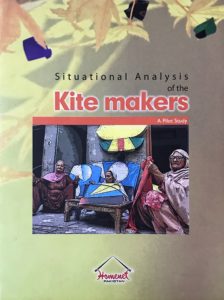
Report Published by Homenet Pakistan
The Government of Punjab has put a ban on Basant and kite sports related activities since year 2006. At the time of putting a ban on kite manufacturing and trade, there were about 150,000 workers in District Lahore and about 180,000 workers in Gujranwalla and Kasur Districts associated with it.
Most of the labour associated with kite making were home based workers and the kite manufacturing business was a large cottage industry. As per studies about 18 % of the home based workers are kite makers out of which, more than 90 % workers were women. The ban not only rendered thous ands of women and families jobless, it also impacted the other sectors like bamboo, tread, glue, paper industries.
The Home Based kite makers are the most suppressed element of the society having no knowledge of their fundamental rights. These workers do not have the capability and capacity to raise voice against the evils done to them. Due to the abrupt and sudden ban on kite making and selling sector, a lot of home based workers (more than 90 % of which are women) lost income all of a sudden. The Government did not provide any assistance to the kite makers and their families due to which they had to switch to other livelihood options like daily wages labour, street vending, domestic servicing etc. at a much lower income bracket since they had no other particular skills to sell in the market. The aftermath of the event was that the kite makers had lesser food and had to stop sending their children to school because they could not afford their education. The parents had to leave the younger children at home or with neighbours so that they could go in search of labour elsewhere. Many of them, especially women, suffered from anxiety because of perpetual stress. Due to loss of employment many families forced their children to labour, at even riskier and unhealthy places, just to make ends meet (before kite manufacturing was banned, the children were already working at home, but under parental supervisions). Over and above the unavailability of conveyance/transport is the biggest challenge for women kite makers.
It is unfortunate that no one from the power corridors or any pillar of the state ever bothered to look at the miseries of this segment of the society and ever showed sympathy with them until 2010. In the year 2010 the issue was raised by Homenet Pakistan which, is an NGO working for the women empowerment and development in Pakistan. The issue was highlighted before the media and power corridors. In the year 2013 a situation analysis based on fact and figures was published by Homenet Pakistan which was the first ever documented research on the issue. 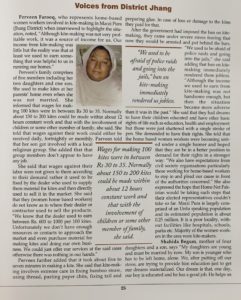
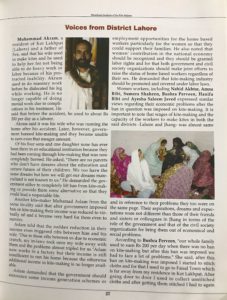
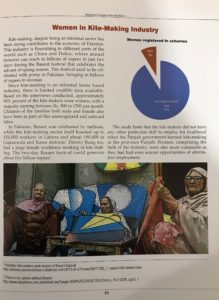

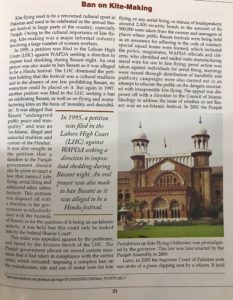
It is very comic that a vast majority of these homebased workers are kite makers. A kite per se is a combination of art and geometry and cannot take life of a person in itself. A kite can be taken as a piece of art and a real masterpiece of a kite is not less than any painting. The real evil was the glass coated thread (i.e. ‘Doar’) which is used in kite flying and not the kite. The Government, instead of regularizing the manufacturing of the Doar, codified laws which were defective to regulate the kite flying activities. Over and above even the defective legislation were not implemented in its true spirit which is clear violation of Article 18 of the Constitution and deprived these homebased workers of their bread and butter.
Also Read
History of Basant and its Ban
https://khalidzafar.com/history-of-basant- and-its-ban-in-pakistan
Defect in Kite Flying Laws and Improvements Required
https://khalidzafar.com/kite-flying-laws-the-defects- and-improvements
Role of District Kite Flying Association in killing the culture of kite flying in Lahore
https://khalidzafar.com/killing-the-culture- and-death-of-art-by-district-kite-flying-association
